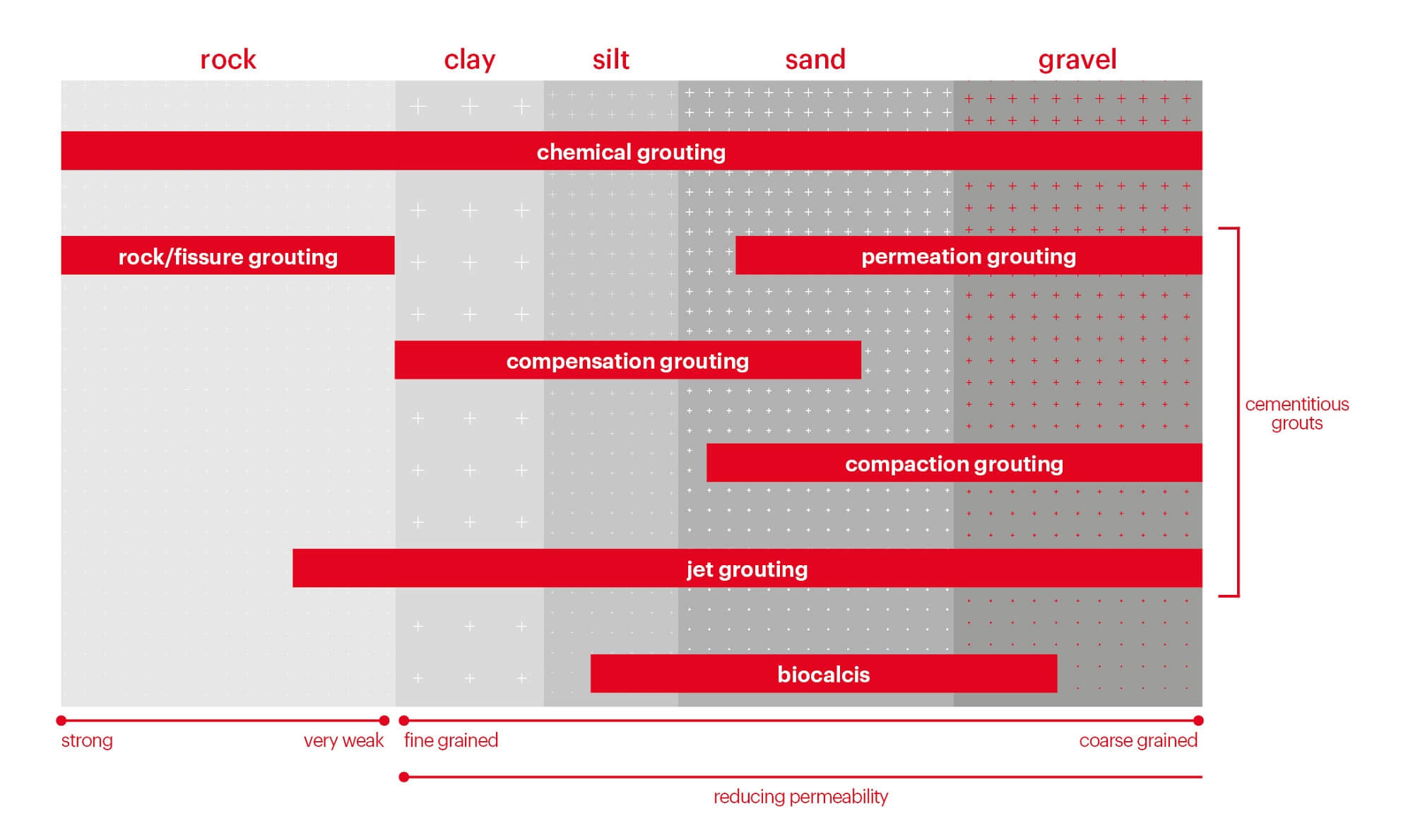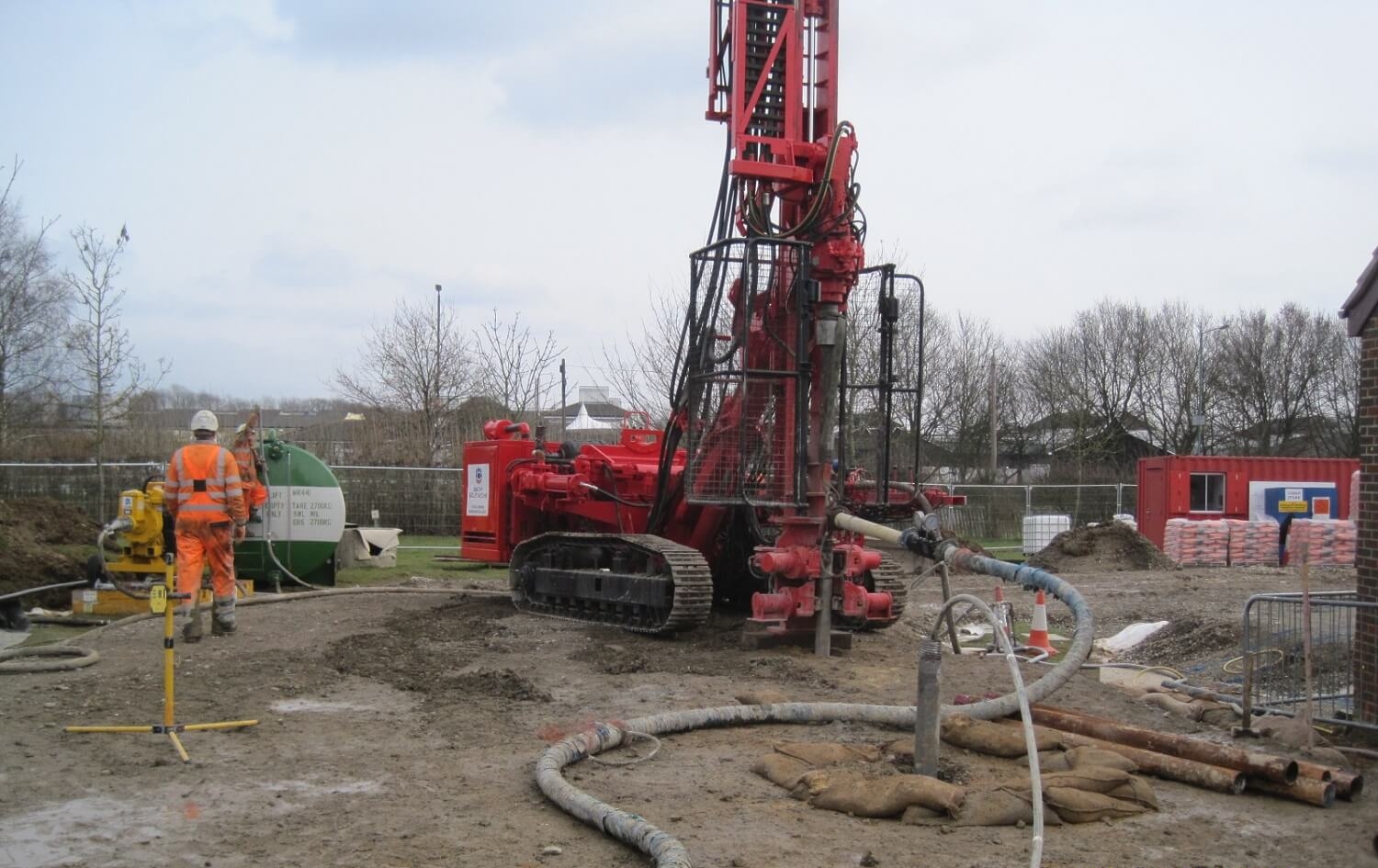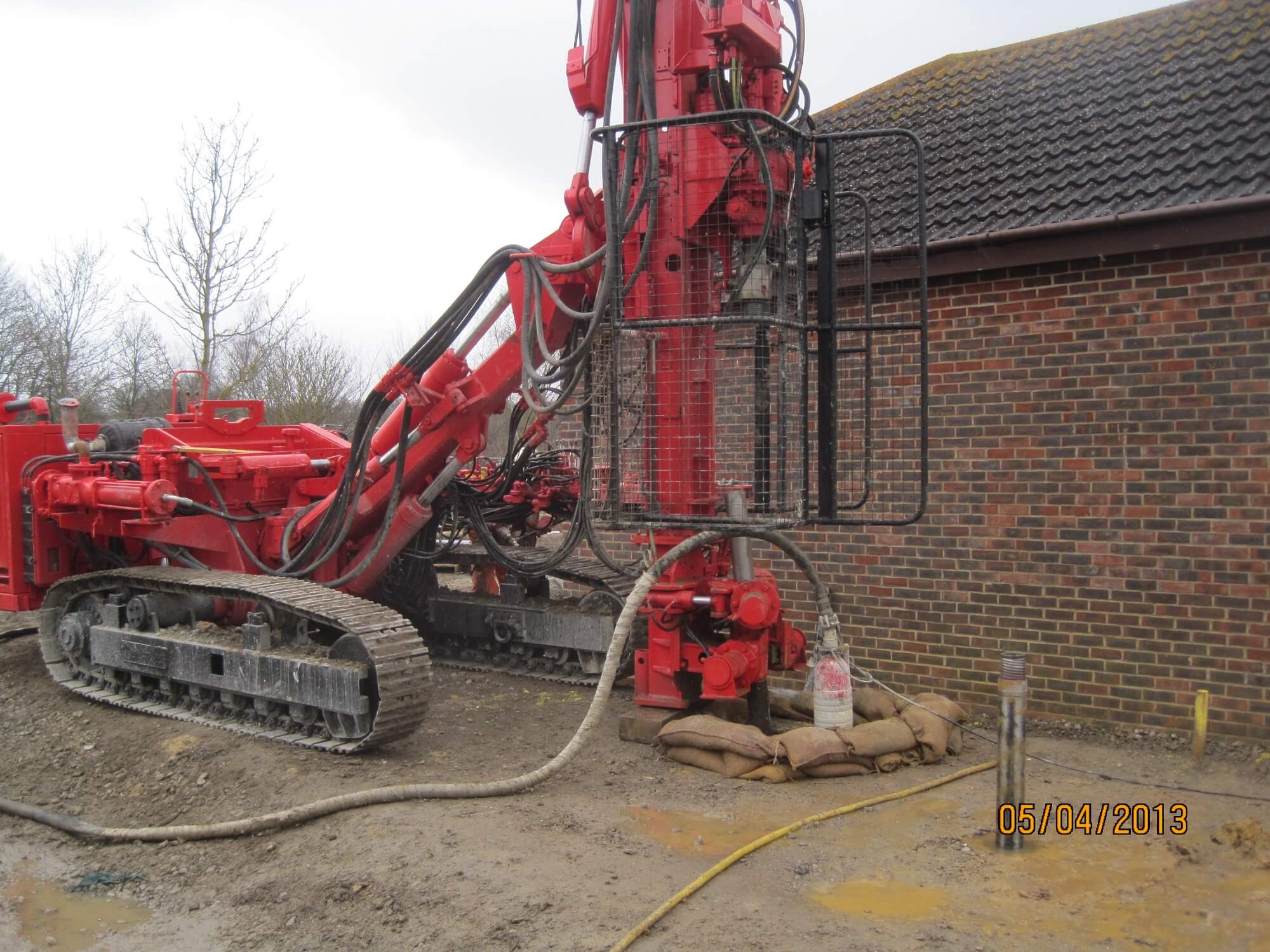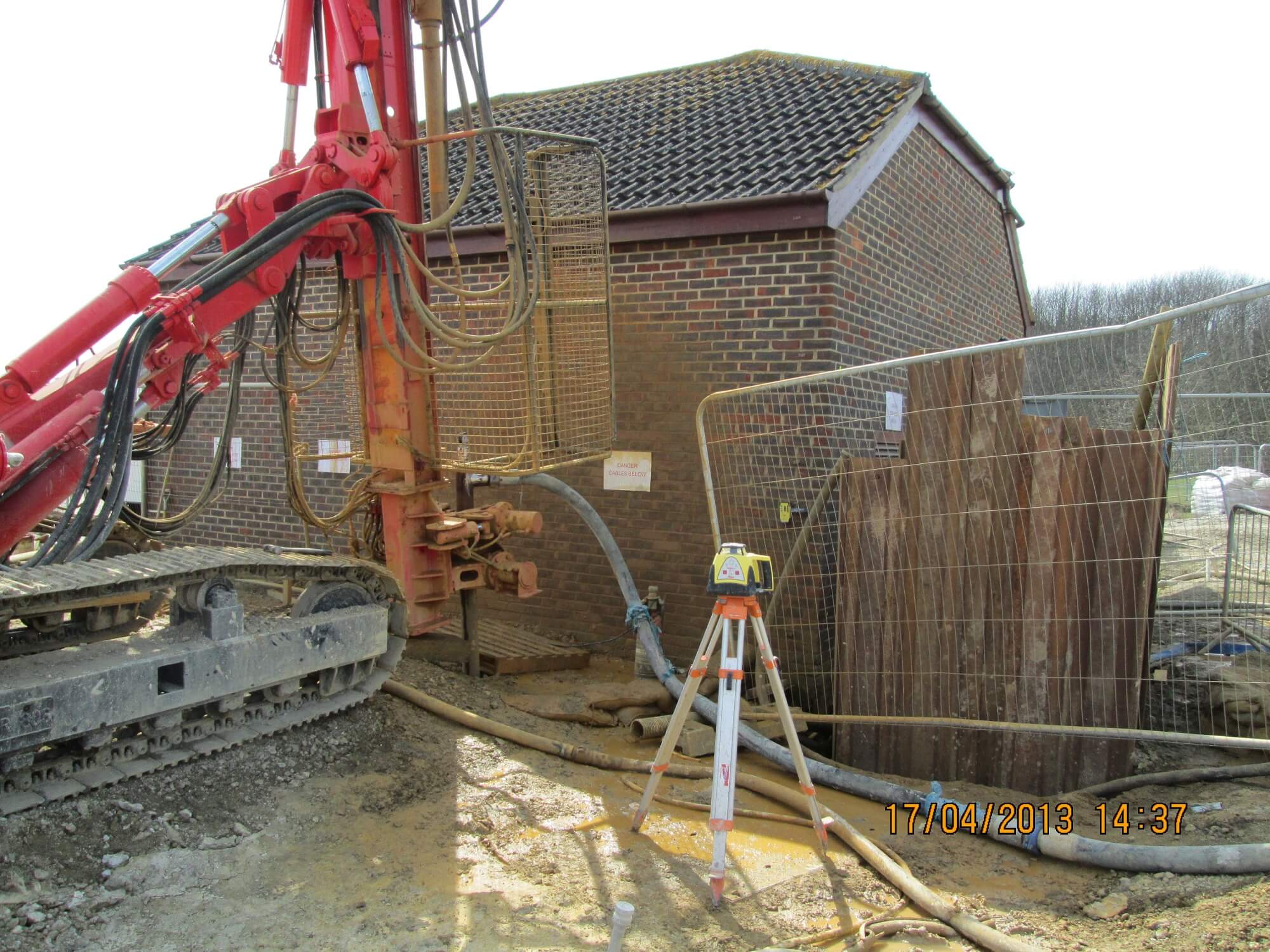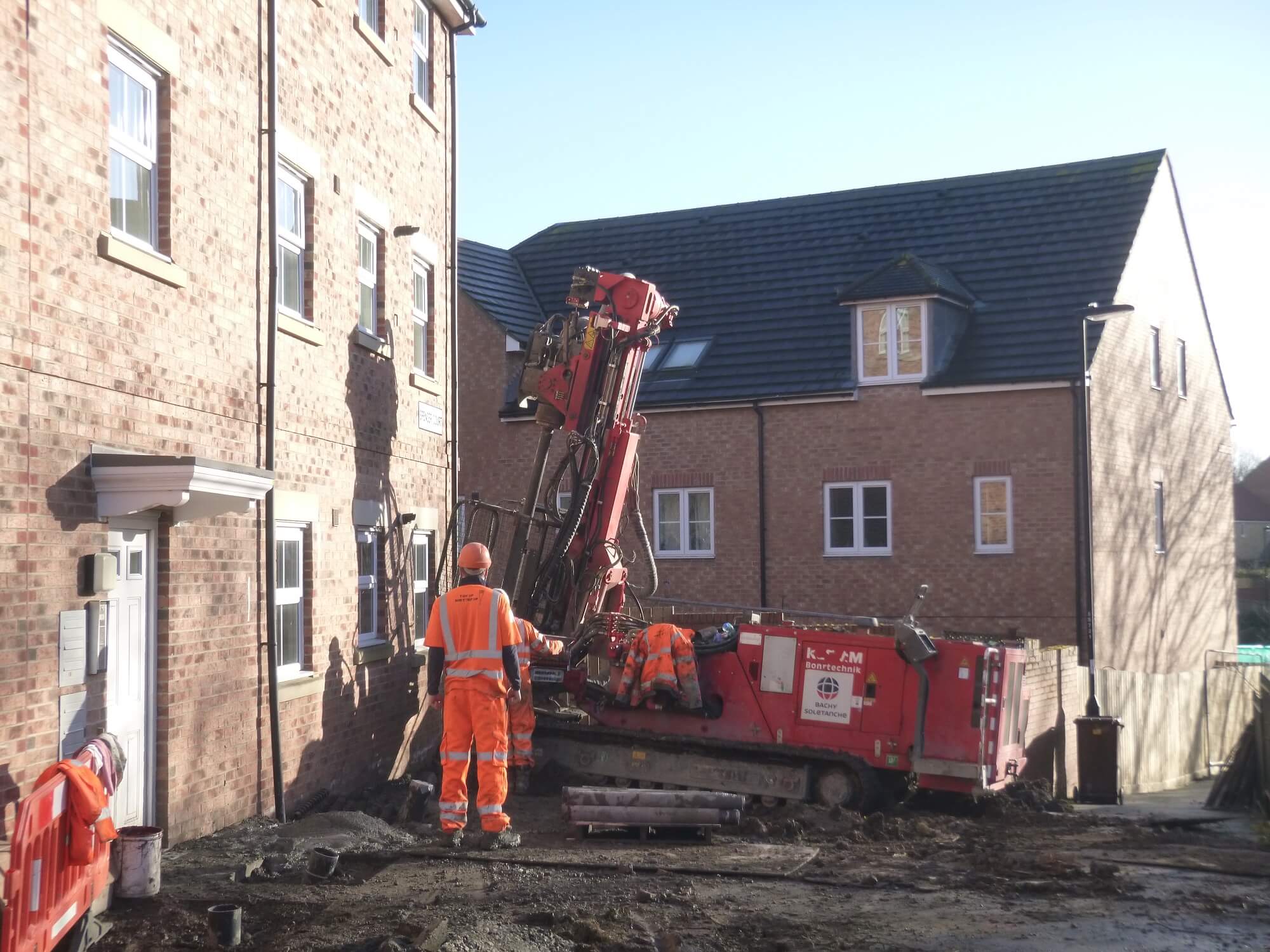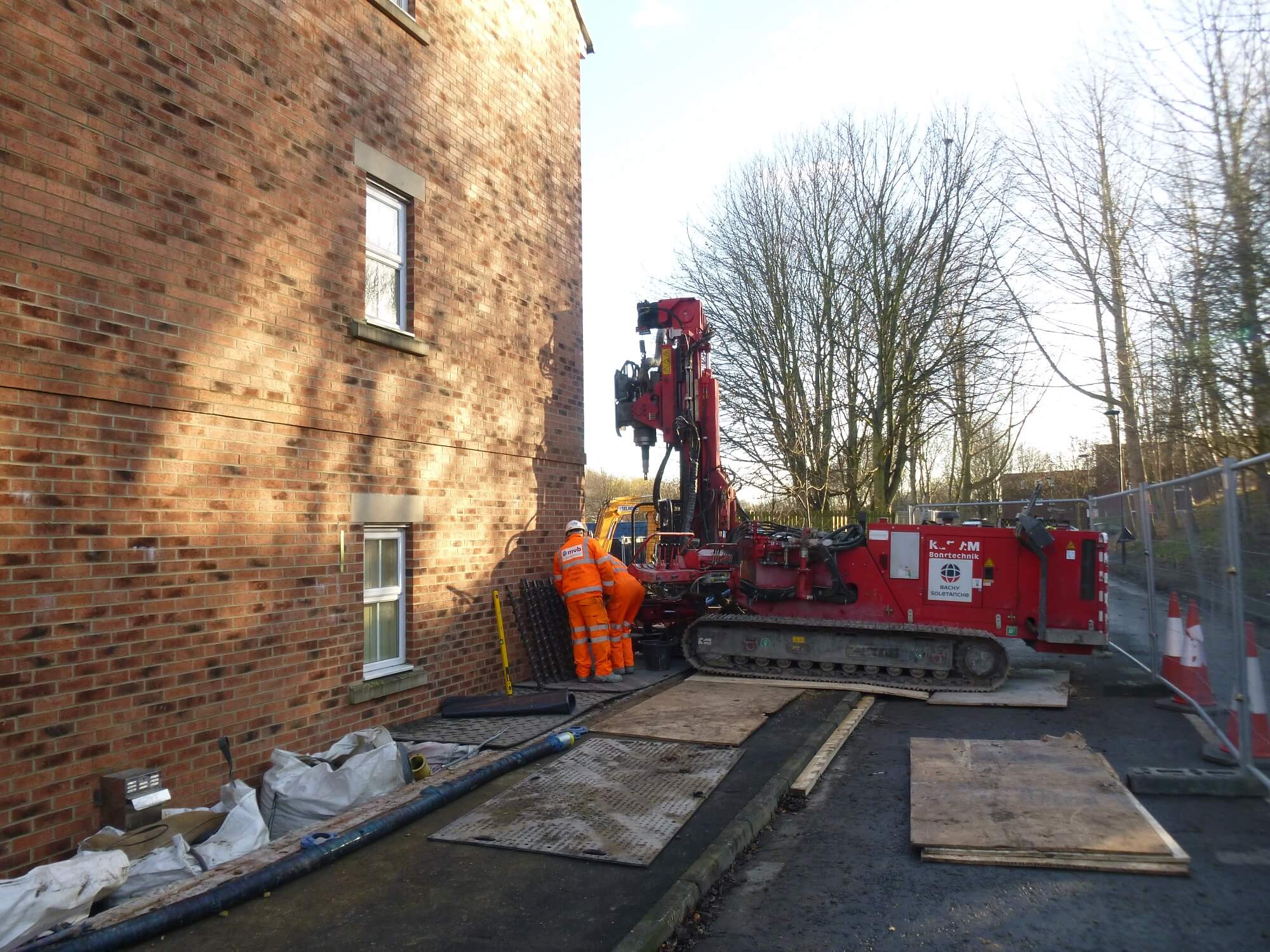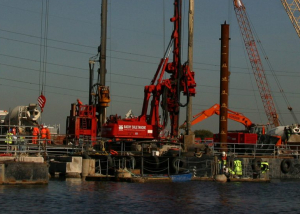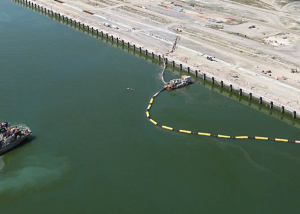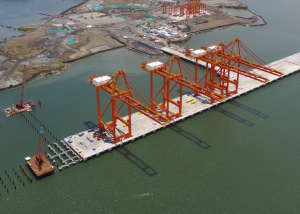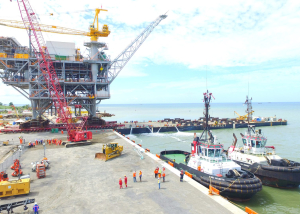The injection of stiff mortar or paste instead of grout to displace and compact the soil in situ, thus improving its engineering characteristics. The technique is particularly useful for the consolidation of loose strata, to increase ground bearing capacity and for the treatment of dissolution features. The degree of densification depends on the type of soil treated and the grid pattern for the injection points.
HOW IT WORKS
Compaction grouting is a process of increasing the density of the soil by injecting a stiff mortar under pressure (generally 0.5 to 1 Bar/m depth), through cased boreholes. As the grout is pumped in, it gradually forms a bulb which pushes the surrounding soil to the side, thereby increasing the relative density of the soil. The casing is the withdrawn by one metre and the grouting process is repeated until full treatment is achieved.
Capability: Depending on ground conditions, borehole depths can reach up to 30m. The densification achieved can be measured using standard soil investigation techniques.
Advantages: Ability to work in areas of restricted access, cost effective, easily scalable.
